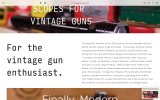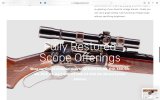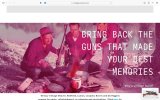Hopefully I can clear up a point or three with regard to scopes.
1: The average adult’s eye pupil diltates to a maximum of 7mm in the dark.
This is why many of the old “low light” hunting scopes were fixed 8x56 scopes. The objective lens diameter, divided by the magnification will give you the exit pupil diameter of the scope. 56 / 8 = 7
Less than 7mm does not maximize light transmission, and more than 7mm is wasted light that the human eye cannot use. This is the reason why high magnification scopes have inferior light transmission to lower power scopes and why 8x42 binoculars are brighter than 10x42’s.
2: Lens coatings have come a long way since the 1930’s, when an employee at ZEISS, Dr Smakula invented the concept. Each optics company that coats their own lenses uses their own proprietary “recipe” of coating minerals, which gives each its unique optical qualities and are very, very closely guarded trade secrets.
The actual coating process is basically the same across all the manufacturers.
The prepared lenses are loaded into a rotating disc which is then placed into a vacuum oven. The various minerals eg. Magnesium are then heated, which basically vapourises the mineral, and this vapour then adheres to the lens.
3: The actual glass that’s used in the main lens elements of scopes and binoculars, has also come along in leaps and bounds. Especially in the last 15-20 years. Today, lenses contain Flourite and other additives that increase their clarity and light transmission figures substantially vs 20 years ago. Some of these modern lenses are actually so sensitive, that they need a special coating between the various grinding and polishing steps. Otherwise the air in the room will corrode the glass!
4: For most U.S and African hunters, light transmission and illuminated reticles are not that important, but in Europe it’s often the first priority for a hunter looking at a new optic. A LOT of their hunting takes place at night and the use of spotlights and other artificial light sources are taboo, so they need every last bit of transmission they can get.
5: The diameter of the tube has NOTHING to do with light transmission.
Zip, Zero, Nada! A wider tube diameter allows for greater elevation and windage adjustment. That’s it.
Because of the large objective diameters used in many European scopes, they went for a 30mm tube for aesthetic and structural strength reasons. No other.
A 56mm objective scope would look stupid with a 1” tube.
6: If you’ve never owned a scope with an integral rail, try it!
They’ve been used in Europe for over 50 years!
The scope is always mounted straight and level with the action and barrel. (If the scope is skew, it’s the action or barrel that’s cockeye)
There is no pressure on the optics in the scope and everything can move perfectly. We’ve also used them on rifles up to 500 Jeff without a single issue.
Basically it’s perfection developed many years ago. Kind of like 6.5 and 7mm cartridges.








 excellent post
excellent post